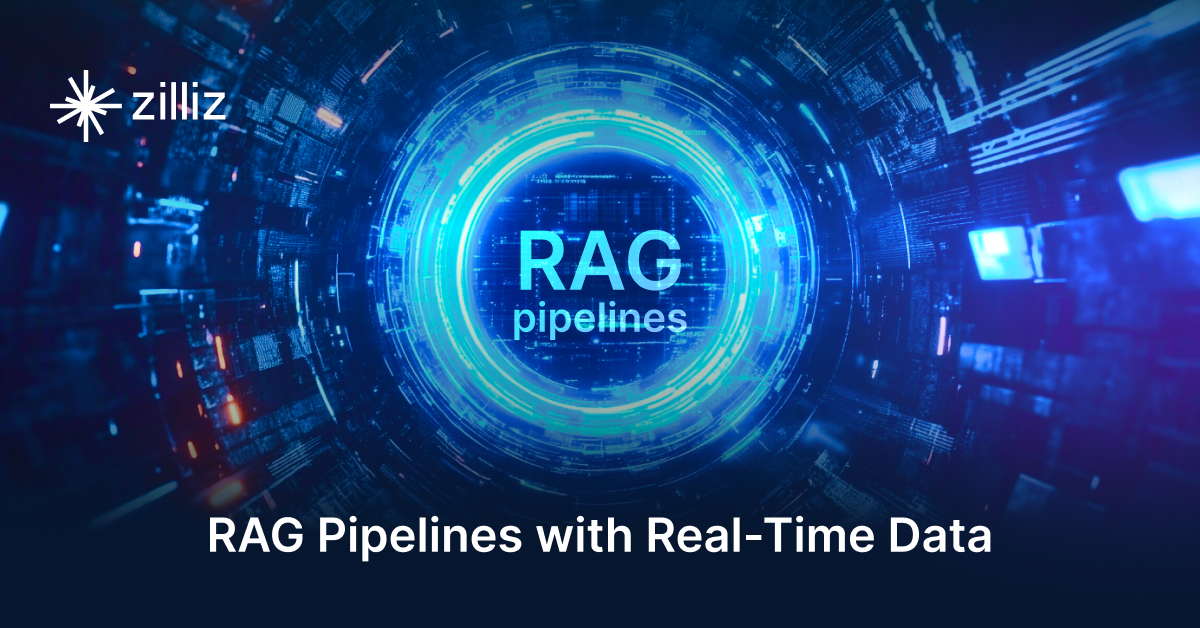Apache Cassandra vs Chroma: Choosing the Right Vector Database for Your AI Apps

Introduction
As artificial intelligence continues to redefine this data-driven world, the need for robust vector databases that can handle complex data structures like vector embeddings is becoming increasingly evident. This blog will introduce and compare two notable databases: Apache Cassandra and Deep Lake. Each offers distinctive approaches to handling vector embeddings essential for AI applications.
What is a Vector Database?
Before we compare Apache Cassandra vs Chroma, let's first explore the concept of vector databases.
A vector database is specifically designed to store and query high-dimensional vectors, which are numerical representations of unstructured data. These vectors encode complex information, such as text's semantic meaning, images' visual features, or product attributes using machine learning models. By enabling efficient similarity searches, vector databases play a pivotal role in AI applications, allowing for more advanced data analysis and retrieval.
Vector databases have been adopted in many use cases, including e-commerce product recommendations, content discovery platforms, anomaly detection in cybersecurity, medical image analysis, and natural language processing (NLP) tasks. They also play a crucial role in Retrieval Augmented Generation (RAG), a technique that enhances the performance of large language models (LLMs) by providing external knowledge to reduce issues like AI hallucinations.
There are many types of vector databases available in the market, including:
- Purpose-built vector databases such as Milvus, Zilliz Cloud (fully managed Milvus)
- Vector search libraries such as Faiss and Annoy.
- Lightweight vector databases such as Chroma and Milvus Lite.
- Traditional databases with vector search add-ons like Apache Cassandra
Understanding Apache Cassandra
Apache Cassandra is an open-source, distributed NoSQL database system designed to handle massive amounts of data across many servers with no single point of failure. It was originally developed to efficiently handle large amounts of structured and semi-structured data across many nodes. Cassandra is known for its high scalability, fault tolerance, and ability to operate in distributed environments with minimal downtime or performance degradation.
With the release of Cassandra 5.0, Apache Cassandra is evolving beyond its core functionality as a NoSQL database to support vector embeddings and vector search. Cassandra's vector search functionality is built on its existing architecture. It allows users to store vector embeddings alongside other data and perform similarity searches. This integration enables Cassandra to support AI-driven applications while maintaining its strengths in handling large-scale, distributed data.
A key component of Cassandra's vector search is Storage-Attached Indexes (SAI). SAI is a highly scalable and globally distributed index that adds column-level indexes to any vector data type column. It provides unparalleled I/O throughput for databases using Vector Search and other search indexing. SAI offers extensive indexing functionality, capable of indexing both queries and content (including large inputs like documents, words, and images) to capture semantics.
Vector Search is the first instance of validating SAI's extensibility, leveraging its new modularity. This Vector Search and SAI combination enhances Cassandra's capabilities in handling AI and machine learning workloads, making it a strong contender in the vector database space.
Chroma: Overview and Core Technology
Chroma is an open-source, AI-native vector database that simplifies the process of building AI applications. It acts as a bridge between large language models (LLMs) and the data they require to function effectively. Chroma's main objective is to make knowledge, facts, and skills easily accessible to LLMs, thereby streamlining the development of AI-powered applications. At its core, Chroma provides tools for managing vector data, allowing developers to store embeddings (vector representations of data) along with their associated metadata. This capability is crucial for many AI applications, as it enables efficient similarity searches and data retrieval based on vector relationships.
One of Chroma's key strengths is its focus on simplicity and developer productivity. The team behind Chroma has prioritized creating an intuitive interface that allows developers to quickly integrate vector search capabilities into their applications. This emphasis on ease of use doesn't come at the cost of performance. Chroma is designed to be fast and efficient, making it suitable for a wide range of applications. It operates as a server and offers first-party client SDKs for both Python and JavaScript/TypeScript, providing flexibility for developers to work in their preferred programming environment.
Chroma's functionality revolves around the concept of collections, which are groups of related embeddings. When adding documents to a Chroma collection, the system can automatically tokenize and embed them using a specified embedding function, or a default one if not provided. This process transforms raw data into vector representations that can be efficiently searched. Along with the embeddings, Chroma allows storage of metadata for each document, which can include additional information useful for filtering or organizing data. Chroma provides flexible querying options, allowing searches for similar documents using either vector embeddings or text queries, returning the closest matches based on vector similarity.
Chroma stands out in several ways. Its API is designed to be intuitive and easy to use, reducing the learning curve for developers new to vector databases. It supports various types of data and can work with different embedding models, allowing users to choose the best approach for their specific use case. Chroma is built to integrate seamlessly with other AI tools and frameworks, making it a good fit for complex AI pipelines. Additionally, Chroma's open-source nature (licensed under Apache 2.0) provides transparency and the potential for community-driven improvements and customizations. The Chroma team is actively working on enhancements, including plans for a managed service (Hosted Chroma) and various tooling improvements, indicating a commitment to ongoing development and support.
Key Differences
If you’re choosing between Apache Cassandra and Chroma for your vector search needs, this guide will help you understand the differences and make a decision.
Search and Data
Cassandra’s vector search is part of the database. The SAI system indexes queries and content, including documents, words and images. So you can store vector embeddings alongside your other data types in the same database.
Chroma takes a more targeted approach. When you add documents to a Chroma collection, the system auto tokenizes and embeds them. You can use your own embedding function or Chroma’s default one. The system stores metadata with each embedding and supports both vector and text based queries, returns matches based on vector similarity. This makes it easier to build and maintain AI applications.
Scalability and Performance
Cassandra is great at handling large scale distributed data. Its vector search inherits this distributed architecture, so you can scale horizontally by adding more nodes. The SAI system is designed for high I/O throughput, which is important for databases using vector search.
Chroma is optimized for a different scale. It’s fast and efficient but optimized for developer productivity and ease of use not massive distributed deployments. So it’s good for teams that need to get up and running quick and don’t need extreme scale.
Integration and Dev Experience
Cassandra’s vector search integrates with existing Cassandra deployments. If you’re already using Cassandra, adding vector search means working with tools and processes you already know. But there’s a learning curve if you’re new to Cassandra’s architecture.
Chroma is a simpler path to implementation. It has first party client SDKs for Python and JavaScript/TypeScript and the API is straightforward. The system works with different embedding models and integrates with other AI tools and frameworks, making it easier to build AI pipelines. The server-based architecture gives developers flexibility in how they structure their applications.
Cost and Ops
Cassandra requires more operational expertise and resources to maintain, especially in a distributed setup. You’ll need to consider the cost of running and maintaining multiple nodes but this comes with the benefit of high availability and fault tolerance.
Chroma has less operational overhead, so is more cost effective for smaller deployments. We’re working on a managed service (Hosted Chroma) which would be an even simpler option for teams that don’t want to manage infrastructure.
When to Use Apache Cassandra
Apache Cassandra is great for enterprise environments with huge datasets across many servers and high availability. It’s perfect when you’re already using Cassandra for other data storage and want to add vector search or when you need a battle tested distributed system that can scale horizontally. Cassandra is for teams with infrastructure expertise who can manage complex distributed systems and want to combine traditional db operations with vector search.
When to Use Chroma
Chroma is the better choice when you’re building AI applications that need fast implementation and simple vector search. It’s perfect for teams building RAG applications who need to manage document embeddings, do similarity searches and integrate with AI pipelines. Chroma’s strength is in its simplicity and developer friendly approach so it’s great for projects where speed of development and ease of use are more important than huge scale.
Conclusion
Apache Cassandra and Chroma serve different needs in the vector search space. Cassandra is great for large scale distributed operations and combines traditional db capabilities with vector search while Chroma is a streamlined, AI focused approach that prioritizes developer experience and fast implementation. Your choice should match your team’s technical expertise, scale requirements and if you need a full featured distributed db or a specialized vector search solution. Consider your existing infrastructure, development timeline and long term scaling needs when you decide.
Read this to get an overview of Apache Cassandra and Chroma but to evaluate these you need to evaluate based on your use case. One tool that can help with that is VectorDBBench, an open-source benchmarking tool for vector database comparison. In the end, thorough benchmarking with your own datasets and query patterns will be key to making a decision between these two powerful but different approaches to vector search in distributed database systems.
Using Open-source VectorDBBench to Evaluate and Compare Vector Databases on Your Own
VectorDBBench is an open-source benchmarking tool for users who need high-performance data storage and retrieval systems, especially vector databases. This tool allows users to test and compare different vector database systems like Milvus and Zilliz Cloud (the managed Milvus) using their own datasets and find the one that fits their use cases. With VectorDBBench, users can make decisions based on actual vector database performance rather than marketing claims or hearsay.
VectorDBBench is written in Python and licensed under the MIT open-source license, meaning anyone can freely use, modify, and distribute it. The tool is actively maintained by a community of developers committed to improving its features and performance.
Download VectorDBBench from its GitHub repository to reproduce our benchmark results or obtain performance results on your own datasets.
Take a quick look at the performance of mainstream vector databases on the VectorDBBench Leaderboard.
Read the following blogs to learn more about vector database evaluation.
Further Resources about VectorDB, GenAI, and ML
- Introduction
- What is a Vector Database?
- Understanding Apache Cassandra
- Chroma: Overview and Core Technology
- Key Differences
- Search and Data
- When to Use Apache Cassandra
- When to Use Chroma
- Conclusion
- Using Open-source VectorDBBench to Evaluate and Compare Vector Databases on Your Own
- Further Resources about VectorDB, GenAI, and ML
Content
Start Free, Scale Easily
Try the fully-managed vector database built for your GenAI applications.
Try Zilliz Cloud for FreeKeep Reading

Why Context Engineering Is Becoming the Full Stack of AI Agents
Context engineering integrates knowledge, tools, and reasoning into AI agents—making them smarter, faster, and production-ready with Milvus.

How to Build RAG with Milvus, QwQ-32B and Ollama
Hands-on tutorial on how to create a streamlined, powerful RAG pipeline that balances efficiency, accuracy, and scalability using the QwQ-32B model and Milvus.

Building RAG Pipelines for Real-Time Data with Cloudera and Milvus
explore how Cloudera can be integrated with Milvus to effectively implement some of the key functionalities of RAG pipelines.
The Definitive Guide to Choosing a Vector Database
Overwhelmed by all the options? Learn key features to look for & how to evaluate with your own data. Choose with confidence.